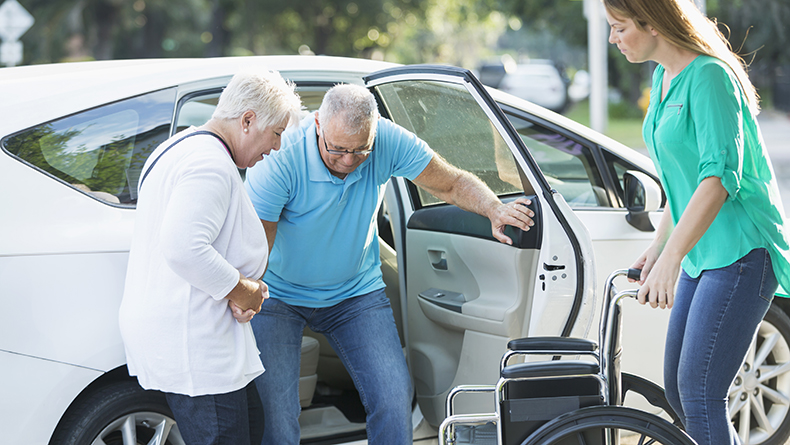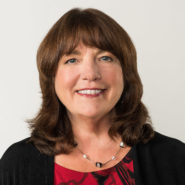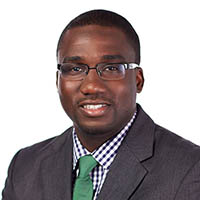AARP Hearing Center
The Need for Relief: Pressures and Costs Facing Family Caregivers
By Susan Reinhard, Jean Accius, November 13, 2018 10:09 AM

November is National Family Caregiver month — when we recognize and honor the 40 million family caregivers across this country.
Being a family caregiver — that is, providing unpaid care to a parent, spouse, partner, friend or other adult— is hard work. It can also be rewarding work. In most cases, it’s an opportunity to give back and offer a return on the loving investment someone once made in us. However, family caregiving can also be expensive. On average family caregivers in 2016 spent nearly $7,000 on out-of-pocket costs—about 20 percent of their income, related to caring for a family member or friend. For some, the cost can even be higher. For example, Hispanic/Latino family caregivers spent 44 percent of their total income (an average of $9,022) per year. By comparison, African American family caregivers spent 34 percent (or $6,616) on caregiving related expenses. Individuals caring for some long-distance had the highest out of pocket costs of $11,923 compared with family caregivers who were living with or nearby the person receiving care.
The vast majority of family caregivers also have jobs and have experienced at least one negative impact on their paid work as a result of caregiving. Plus, any disposable income is often directed to caregiving needs instead of being put towards savings, vacations, or simply eating out at a favorite restaurant.
Yet while economic costs can be tallied, there are other significant family caregiver costs that must be brought to light. This reality is a central part of the AARP Public Policy Institute’s work, and it also comes through loud and clear in a survey from the Associated Press-NORC Center for Public Affairs Research. Many caregivers experience emotional or physical impacts that affect their own health, the survey reaffirmed in highlighting the multi-dimensional costs caregivers incur.
Of the 1,024 family caregivers who completed the A.P.-NORC survey, 39 percent reported having a health condition, physical limitation, or mental health condition that affects their daily life or limits their own activities.
The pressures facing family caregivers have profound implications both on individuals and society as a whole, as a range of AARP Public Policy Institute research and reports highlight. Caregiving falls to every segment of our adult population, and the need will only grow as the American population ages and more older adults require care. Perhaps contrary to what some people may assume, 40 percent of the 40 million family caregivers in this country are men and close to 1 in 4 family caregivers (24%) are Millennials.
The Policy Connection
Many of the findings in both the A.P.-NORC report and PPI’s work have strong policy implications. For example, as a recent PPI report highlights, only 13 percent of private sector workers had access to paid family leave through their employer. Moreover, historically paid family leave has generally been intended for new parents and not necessarily family caregivers. This must change.
Paid family leave is a crucial issue because the majority (60 percent) of family caregivers are employed. Research in states where stronger paid family leave policies have been enacted shows that having the ability to take time off to care for a loved one lessens the stress of caregiving, provides greater financial security, and—in the employer’s favor—increases employee retention and helps maintain productivity.
Other areas in which we need to get better: providing family caregivers with respite opportunities, ensuring that caregivers have the coping tools they need, and addressing feelings of isolation. More than half of current caregivers feel lonely at least some of the time, according to the AP-NORC survey. And while the survey found 63 percent of caregivers turn to prayer and meditation to help them cope, others reported unhealthy behaviors such as sleeping less (44 percent) and drinking more alcohol (17 percent).
Other support for caregivers must focus on the increasingly complex medical tasks they are being asked to do. Almost half (46 percent) of family caregivers say they perform medical tasks such as handling prescriptions, helping someone climb the stairs with a cane, and caring for wounds. Often they do this with little to no training.
Hands-on Help
On that topic, AARP has been a true source of hands-on solutions. To better equip caregivers to meet these demands, the Home Alone Alliance offers resources and instruction for caregivers. A series of caregiving videos is available to provide straightforward, concrete instructions on a number of caregiving topics such as diabetic foot care, preventing pressure ulcers, and what to do when someone with limited mobility falls.
As the A.P.-NORC survey as well as a range of Public Policy Institute work highlight, family caregivers are paying significant costs to ensure their loved ones receive the attention they need to live full lives. There is now a strong foundation of information and resources to spur action and ensure that the public and private sectors alike create an environment that appropriately recognizes and supports family caregivers.

Susan Reinhard, RN, PhD, FAAN, is a senior vice president at AARP, directing its Public Policy Institute, the focal point for AARP's public policy research and analysis. She also serves as the chief strategist for the Center to Champion Nursing in America, a resource center to ensure the nation has the nurses it needs.

Jean Accius is senior vice president for AARP Thought Leadership and International Affairs. His areas of expertise include aging, caregiving and long-term care policy.































































